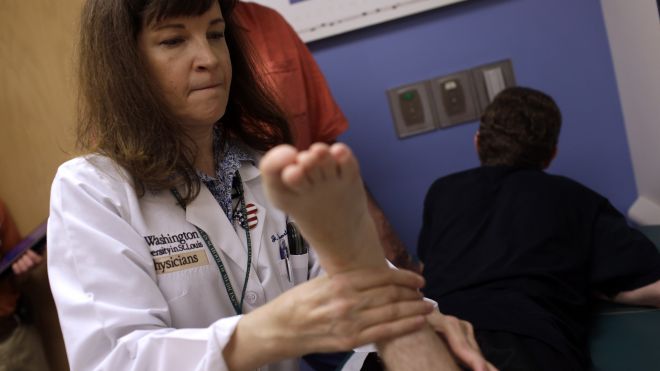Heavy use of pain pills increases risk for erectile dysfunction
Men taking prescription pain pills in high doses and over long periods of time are more likely to experience erectile dysfunction (ED), according to new research.   In a new study published in the journal Spine, researchers examined the health records of 11,000 men taking prescription opioids, like oxycodone, to treat chronic back pain. Men who took high-doses of these prescription painkillers for longer than four months were 50 percent more likely to require medication to treat ED than men who were not taking painkillers. Patients considered to be taking ‘high doses’ of opioids were consuming the equivalent of 80 milligrams of OxyContin per day – or 120 milligrams of morphine. Overall, about 19 percent of the men taking opioids over long periods experienced ED – but researchers said the number might be even higher. “That could well be an underestimate, because many don’t bring it to their doctors attention, would be embarrassed or wouldn’t connect it to medication,” lead study author Dr. Richard Deyo, from the Kaiser Permanante Center for Health Research at Oregon Health & Science University, in Portland Oregon, told FoxNews.com. Researchers noted that opioids are known to cause changes in testosterone levels. “Opioids suppress testosterone levels,” Deyo said. “It’s clear that people taking long-term opioids have testosterone levels well below normal,” Deyo said. Additionally, factors like depression, a common condition among chronic pain patients, could also be contributing to patients’ ED. According to Deyo, the researchers’ findings add to a wealth of evidence indicating that long-term opioid treatment for chronic pain should be avoided when possible. Patients who take opioids for extended periods often develop a tolerance to the medicine and can even experience greater sensitivity to pain over time.   “Patients need to be aware that these medications may not be effective in the long-term for treating chronic pain – they are certainly effective for short-term pain, but not (in the) long run,” Deyo said. Instead of relying on medications, the researchers believe that doctors should encourage alternative treatments for pain relief. “There’s growing evidence that some of the more effective treatments for persistent pain are rigorously designed exercise programs along with cognitive behavioral therapy ,” Deyo said. Cognitive behavioral therapy (CBT) is intended to help patients overcome fears associated with their chronic pain. When it comes to exercise, patients often become afraid of doing anything that might worsen their pain, causing them to avoid physical activities.  “CBT seems to be valuable along with exercise interventions…It’s important to consider the full range of options,” Deyo said. Deyo and his colleagues hope their research will increase patients’ awareness about their treatment options.  He noted that the side effects of pain medications, like ED, are often not well understood. “I think it’s important for people to be aware of this,” Deyo said. “Some people would say, ‘Gosh it’s a problem, but the pain is more important to me now; I’m less concerned about the side-effect than treating the pain.’ Others might say, ‘It’s a high price to pay,’ and they’d rather not (take pain medication).”source : http://www.foxnews.com/health/2013/05/15/heavy-use-pain-pills-increases-risk-for-erectile-dysfunction/







